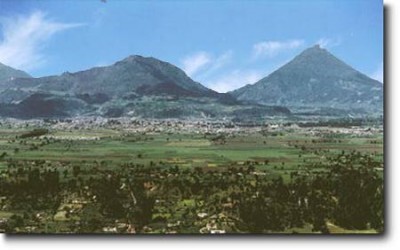About of Quetzaltenango
Quetzaltenango is the second-largest city in Guatemala, with a population of 200,000 people. It is situated near several volcanoes in the heart of the Sierra Madres, 200 kilometers west of Guatemala City. Quetzaltenango’s altitude of 2,333 meters (8,000 feet) above sea level ensures warm days, cool nights, and no mosquitoes.
The name Xelajú originates from the indigenous name for Quetzaltenango: “Xe laju’ noj” which means “under 10 mountains”.
The city of Quetzaltenango was officially founded by the Spanish on the 15th of May, 1524, though the name “Quetzaltenango” came from the Mexican indigenous peoples, the Tlaxcaltecas, who accompanied the Spanish conquistador Pedro de Alvarado and his forces during their invasion of the Guatemalan highlands.
The area quickly became the site of many small towns which formed the city of Quetzaltenango, often called Xelajú or Xela by the local people.
Quetzaltenango is an active city, which does not depend on tourism, nor does it have the high concentrations of language students as do tourist centers such as Cuernavaca, México, Antigua, Guatemala, and Quito, Ecuador.
As a result, students have more opportunities to interact with the local population and participate in Guatemalan life. Xelajú has a rich history and with its six universities and several technical schools, it is often referred to as Guatemala’s cultural center and most progressive city.
There are 35,000 students from all over the country and the city taking classes at universities and high schools. Xelajú has the highest number of elementary, middle, high school, and universities per capita than any other city in the country.
Video # 1 about Quetzaltenango
–
Some of the most celebrated people in Guatemalan history were originally from Quetzaltenango including Otto René Castillo, who is considered the most influential writer in the country, President Jacobo Arbenz Guzman, who was overthrown by the CIA in 1954, and Jesús Castillo, the best-known marimba composer in Guatemala and the world.
With a population 50% indigenous and 50% mestizos, the city is an example of how traditionally impoverished indigenous people have obtained economic and political power in Guatemala running small and big businesses. In 1986, Xelajú elected its first indigenous mayor in 150 years.
Within a few kilometers of the city, there are several Mayan towns that are famous for their busy markets and colorful traditional costumes and woven goods.
Around Quetzaltenango, there are many opportunities to learn about Guatemalan culture. Locals make chocolate and tortillas by hand in their shops, and many are happy to show off their abilities and knowledge if asked.
Tourists can find examples of the traditional weaving-styles of the area at local women’s cooperatives in Xela and Zunil, where lessons in traditional back-strap loom weaving are given daily.
Another way to support the local economy is to buy a pound or two of locally grown organic fair-trade coffee or go on a trip to a local indigenous-owned coffee Finca.
The trips to the fincas are a great experience in the outdoors due to Guatemala’s temperate climate, a function of both the latitude and altitude
The city of Quetzaltenango has many museums and theaters. One is the old Court Building and city jail, now the Cultural Center, a museum that includes local wildlife, Mayan history, and the history of the marimba.
The Courthouse, and many of the other buildings which surround Central Park, are in the colonial style of the Spanish invaders.
The historical Teatro Municipal still hosts theatrical presentations, and other theaters and cultural centers around the City Center also host a wide variety of art exhibits, dance expositions, and conferences on topics such as indigenous issues and youth empowerment.
[nggallery id=26]
Follow us on Facebook